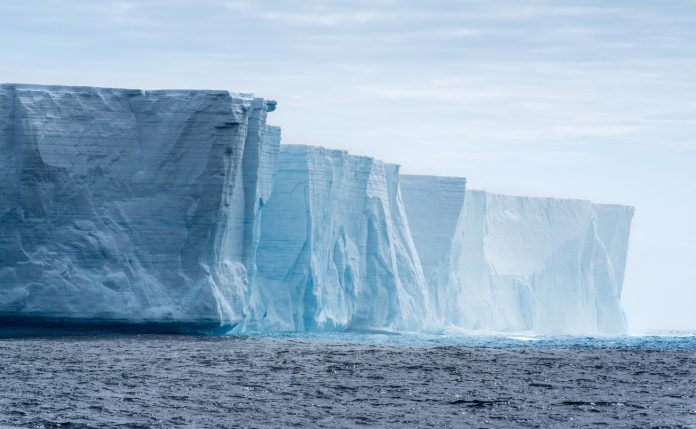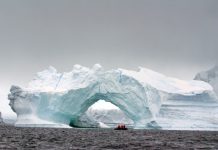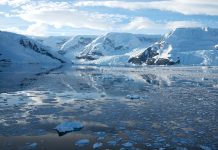Ground-based measuring devices and aircraft radar reveal a loss of ice from the 79° N-Glacier, a critical indicator of the impacts of global warming on polar regions
According to recent measurements by the Alfred Wegener Institute, the Glacier has thinned by more than 160 meters since 1998.
Global warming is causing melting
This loss, due to warm ocean water eroding the ice from below, poses significant implications for sea level rise worldwide.
Researchers, including glaciologist Dr. Ole Zeising, have been deploying measuring devices equipped with radar technology to assess the Glacier’s health.
Channels beneath glacier surface
One discovery is the formation of massive channels beneath the Glacier’s surface, some reaching 500 meters. These channels, carved by water flowing from lakes atop the Glacier, signify the deep impact of warming air temperatures on Greenland’s ice sheet.
Dr. Zeising emphasises the importance of their work, “Since 2016, we have been using autonomous instruments to carry out radar measurements on the 79° N-Glacier, from which we can determine melt and thinning rates,
“We were able to measure that the 79° N-Glacier has changed significantly in recent decades under the influence of global warming.”“
Impact of Environmental Change on Glacier
The study also integrates data from aircraft radar and satellite observations, revealing the dynamic nature of the Glacier’s response to environmental changes.
Surprisingly, melt rates have decreased since 2018, possibly due to colder ocean currents.
Professor Dr. Angelika Humbert, another key figure in the study, comments on the Glacier’s unexpected responsiveness to short-term environmental shifts. “The fact that this system reacts on such short time scales is astonishing for systems that are actually inert such as glaciers,” she notes.
The future of 79° N-Glacier
Scientists anticipate its eventual collapse in the coming decades, possibly leading to consequences for global sea levels.
“We expect that this floating glacier tongue will break apart over the next few years to decades,” explains the AWI glaciologist. “We have begun to study this process in detail to gain maximum insight into the course of the process.”
This proactive approach distinguishes the current research from past studies, enabling scientists to gather invaluable data before the Glacier’s demise.
Editor's Recommended Articles
-
Must Read >> Melting arctic sea ice destroys French wine harvest














